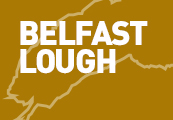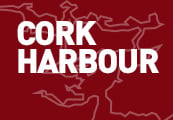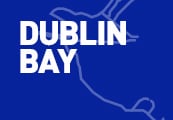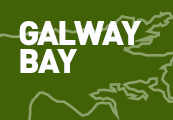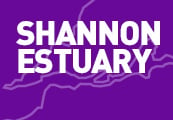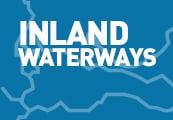Displaying items by tag: irish sea
Marine Notice: Shallow Water Surveys for Irish Sea Gas Interconnector
The Department of Transport has been advised that a geophysical survey, remotely operated vehicle (ROV) diving and an offshore survey of gas pipeline landfalls in Scotland’s Brighouse Bay and Ross Bay, Kirkcudbright and Ireland (Loughshinny and Gormanston) will take place between Tuesday 14 November and the end of December, subject to weather and operational constraints.
Survey works on the Irish Sea gas interconnector will begin in Scottish waters on 14 November before moving into Irish waters on Sunday 19 November.
The survey vessels will conduct a geophysical, ROV and offshore survey of the pipeline landfalls. These shallow water surveys will extend to a depth of approximately 10m below the lowest astronomical tide (LAT) at each location.
The surveys will be conducted by the vessels AMS Panther (callsign 2EHC2) and 4Winds (callsign PCPE) which will work on a 24-hour basis, the former near-shore to some 10m below chart datum and the latter outside that.
During the surveys and ROV diving operations, the vessels will be displaying the relevant day shapes and night lights and will be monitoring VHF Channels 12 and 16.
Due to ROV operations being operated from the vessel, all other passing vessels are requested to leave a wide berth during the operations and operate at minimum speed to reduce vessel wash.
Coordinates and a map of the survey areas as well as contact details can be found in Marine Notice No 75 of 2023, attached below.
Marine Notice: Cable Burial Assessment Survey in Irish Sea
The Department of Transport has been advised that a geophysical and geotechnical surveys is being undertaken by Green Rebel Marine in the Irish Sea to assess cable burial on behalf of MDM.
The survey work was anticipated to start on Monday 19 June and will be completed by the end of September, subject to weather and operational constraints.
Surveys will be conducted by two vessels: the semi-SWATH catamaran Roman Rebel (callsign 2ICA5) which will conduct 24-hr operations, and the Lady Kathleen (callsign EIXT2), a catamaran which will conduct 12-hr operations. Both vessels will display appropriate lights and signals.
As the survey vessels will be restricted in their ability to manoeuvre when surveying, due to the deployment of the towed survey equipment from the vessel for the duration of the survey activities, other vessels are kindly requested to keep a wide berth.
Mariners are advised to keep continuous watch on VHF Channel 16 when navigating the area.
Coordinates and a map of the survey areas as well as contact details can be found in Marine Notice No 40 of 2023, attached below.
Marine Notice: University of Limerick ROV Trial in Irish Sea Near Kish Bank Lighthouse
Research survey TC22017 will be carried out in the Irish Sea in the vicinity of the Kish Bank Lighthouse by the University of Limerick (UL) in collaboration with the Marine Institute from this Sunday 11 to Friday 16 December, subject to weather and operational constraints.
The aim of this survey the testing and development of UL’s underwater ROV (remotely operated vehicle) system and automation platforms.
Ship-time will be focused on trialling comprehensive multi-disciplinary control and inspection methods, utilising new technologies to enable automated offshore asset inspection.
The primary outcome of the trials is to work towards the development of a framework and technique for the inspection of offshore assets remotely.
The survey will be conducted by the RV Tom Crean (callsign EIYX3) which will display appropriate lights and signals. The operations will take place between 7am and 7pm daily. The vessel will mainly run in DP mode while the ROV operates close to Kish Bank Lighthouse.
A map and coordinates of the survey area as well as contact details and a list of equipment used can be found in Marine Notice No 84 of 2022, attached below.
Ultra-High-Resolution Geophysical Survey in Irish Sea Off Co Louth for Oriel Wind Farm
An ultra-high-resolution geophysical survey will be carried out in the Oriel Wind Farm array area in the Irish Sea off Co Louth to provide bathymetric and subsurface information to facilitate the development of the offshore wind farm.
The survey work was anticipated to start Friday 18 November 2022 and to be completed by mid-December 2022, subject to weather and operational constraints.
Works will be confined to the Oriel Wind Farm array area, which is located between Dunany Point and the Cooley Peninsula.
The survey will be conducted by the Fastnet Pelican (callsign 2FNX7), which is a shallow draft survey vessel. The vessel will be restricted in its ability to manoeuvre due to the deployment of towed survey equipment up to 100 metres astern.
All other vessels operating within this area are requested to leave a wide berth.
The work vessel will display appropriate lights and signals and operations will be conducted during daylight hours. Mariners are advised to keep continuous watch on VHF Channel 16 when navigating the area.
Coordinates and a map of the survey area as well as contact details can be found in Marine Notice No 78 of 2022, attached below.
Atlantic Bluefin Tuna Hooked Off Pembrokeshire Coast Believed to Be Biggest Ever Caught in Welsh Waters
An Atlantic bluefin tuna hooked off the Pembrokeshire coast recently is believed to be the biggest fish ever caught in Welsh waters.
As Wales Online reports, the 900lb (408kg) monster catch was made by Simon Batey and Jason Nott while returning from an angling trip in the Irish Sea.
Keeping the tuna in the water, they recorded a measurement of 111 inches (2.82 metres) from nose to tail before releasing it back into the sea.
The anglers were on a boat from White Water Charters which is licensed to catch, tag and release Atlantic bluefin tuna as part of a Welsh government programme similar to the Tuna CHART scheme in Ireland.
Wales Online has more on the story HERE.
Operator Stena Line is set to create a pet-friendly area on its Belfast to Cairnryan route - but the animals must be in carrier cases onboard.
The company announced last month that pets were to be banned from passenger areas on their Irish Sea route (see rivals, P&O pets plan).
Its policy had allowed companion animals on board in secured pet carriers but after October 31, no dogs would have been allowed on deck or in any passenger areas between Belfast and Cairnryan.
However, a spokesperson for Stena Line said there has been a “considerable amount of feedback from customers on the impact of this decision to their current and future travel plans”.
“Stena Line has listened carefully to input from its passengers and the concerns that people have raised, both in support and in opposition to the proposal,” said the company.
More from Belfast Telegraph on the reversal.
Wreck of Ship That Sent Iceberg Warning to Titanic Found in Irish Sea
The ship which sent an iceberg warning to the RMS Titanic, before the ocean liner sank, has been identified lying in the Irish Sea by researchers from Bangor University in Wales.
In 1912 the merchant steamship SS Mesaba was crossing the Atlantic and sent a warning radio message to the RMS Titanic. The message was received, but never reached the bridge.
Later that night, the supposedly unsinkable Titanic hit an iceberg and sank on her maiden voyage, taking 1,500 lives and becoming the world’s most infamous shipwreck.
The SS Mesaba continued as a merchant ship over the next six years before being torpedoed while in convoy in 1918.
Using state-of-the art multibeam sonar mounted on Bangor University’s research vessel Prince Madog, researchers have finally been able to positively identify the wreck and have revealed her position for the first time.
 The merchant ship SS Mesaba which radioed an iceberg warning to the RMS Titanic | Credit: State Library of Queensland
The merchant ship SS Mesaba which radioed an iceberg warning to the RMS Titanic | Credit: State Library of Queensland
“For the marine archaeologist, multibeam sonar has the potential to be as impactful as the use of aerial photography was for landscape archaeology,” the university says.
Multibeam sonar enables seabed mapping of such detail that superstructure details can be revealed on the sonar images, it adds.
The SS Mesaba was one among 273 shipwrecks lying in 7,500 square miles of Irish Sea which were scanned and cross-referenced against the UK Hydrographic Office’s database of wrecks and other sources.
It was thought that 101 wrecks were unidentified, but the number of newly identified wrecks was far higher, as many — the SS Mesaba included — had been wrongly identified in the past.
Details of all the wrecks have been published in a new book, Echoes from the Deep by Dr Innes McCartney of Bangor University, conducted under a Leverhulme Fellowship while at Bournemouth University.
Dr McCartney said: “The results of the work described in the book has validated the multidisciplinary technique employed and it is a ‘game-changer’ for marine archaeology.
 Bangor University’s purpose-built research vessel Prince Madog
Bangor University’s purpose-built research vessel Prince Madog
“Previously we would be able to dive to a few sites a year to visually identify wrecks. The Prince Madog’s unique sonar capabilities has enabled us to develop a relatively low-cost means of examining the wrecks. We can connect this back to the historical information without costly physical interaction with each site.
“It should be of key interest to marine scientists, environmental agencies, hydrographers, heritage managers, maritime archaeologists and historians.”
Dr Michael Roberts, who led the sonar surveys at the university’s School of Ocean Sciences, said: “The expertise and unique resources we have at Bangor University, such as the Prince Madog enable us to deliver high-quality scientific research in an extremely cost-effective manner.
“Identifying shipwrecks such as those documented in the publication for historical research and environmental impact studies is just one example of this.
“We have also been examining these wreck sites to better understand how objects on the seabed interact with physical and biological processes, which in turn can help scientists support the development and growth of the marine energy sector.”
Stena Line Celebrates 60th Anniversary: From Shopping Boats to Floating Bridges
Ferry company Stena Line celebrates its 60th anniversary today having established itself as a trusted link between people, places and societies.
Sten A. Olsson, the founder of Stena Line, began operating a shipping service from his hometown Gothenburg in Sweden to Skagen in Denmark in 1962 where he was a scrap merchant for 20 years. Where others saw waste, he saw business opportunities, as he needed a means to transport scrap metal, helping to lay the foundations for what would become one of the most iconic brands in Sweden.
In 1967, after establishing routes to Skagen and later Fredrikshavn, Stena Line opened a direct route from west Sweden with its route to Kiel, Germany. Through strategic purchases and acquisitions, Stena Line in the 80s and 90s, now under the management of Sten’s son, Dan Sten Olsson, established its first routes from the Netherlands to the UK and from the UK to Ireland where is still dominates in the Irish Sea ferry market.
Following the fall of the iron curtain, Stena Line introduced the new Karlskrona – Gdynia route in 1995 which laid the foundations for what is now one Stena Line’s busiest regions.
Stena Line transports 6 million passengers and several million tonnes of freight units per year on 38 ships, operating 18 routes across a European wide network spanning from the west of Ireland to Latvia. Three principles have always determined the course of the company: the ambition to grow, the ability to adapt, and a never-ending curiosity that inspires new innovations.
“At Stena Line, we never forget our heritage. Sten A Olsson was a real entrepreneur, and it was his ambition, flexibility and everlasting curiosity that shaped our DNA. Over the six decades that have passed since he opened his first shipping service, we have continued to challenge existing ideas and models within our business. This is what has enabled us to develop into a leading ferry operator. And we are now eagerly looking forward to taking the next steps in our future, with further expansion and sustainable innovations“, said Niclas Mårtensson, CEO Stena Line.
The company is characterised by its efficient, regular passenger and freight services and is constantly reviewing its business to offer its customers the best experience on the Irish Sea.
Today, Stena Line is an efficient, high-frequency, freight-heavy and guest-friendly ferry transport service. Constant innovation and transition saw the original “floating grocery store” to Denmark first turn into a leisure, cruise like business driven by tax-free shopping in the 80´s and 90´s, and then into today’s resourceful, flexible and network-driven company.
The next big challenge for the operator and the entire transport sector is the green transition. Projects like the methanol ferry on Kiel-Göteborg, the state-of-art E-Flexer ferries, and ambitious electrification projects will put the Stena Line motto into reality: Connecting Europe for a Sustainable Future.
‘Blazing Paddles’ Pair Attempting to Cross Irish Sea from Wales to Wicklow by ‘Lie-Down’ Paddleboard This Weekend
An intrepid duo intend to cross the Irish Sea from Wales to Wicklow this weekend in an unusual fashion — paddling on their bellies.
Damien Wildes and Charlie Fleetwood will assume the prone position on their stand-up paddleboards from Holyhead in the early hours of this Saturday 9 July for the crossing to Greystones, which they expect to take somewhere between 14 and 20 hours.
Each will be assisted by their own volunteer-operated support boat for the endurance feat in which they hope to raise at least €15,000 for three local charities: Purple House Cancer Support, Wicklow SPCA and Wicklow RNLI.
“Completing the prone crossing will be a world’s first,” Damien told Greystones Guide, “and I know not many people have actually made it across by SUP, so Charlie will make it onto a very short and very illustrious list.”
Portaferry and Peel RNLI came to the aid of a kayaker who got into difficulty in the Irish Sea earlier this week.
The man, who had been kayaking from the Isle of Man to Northern Ireland from early morning on Wednesday (8 June) became fatigued and, when he couldn’t see land, raised the alarm for help.
Both the inshore lifeboat from Portaferry RNLI and the all-weather lifeboat from Peel RNLI on Mann were requested to launch.
The pagers at Portaferry RNLI sounded shortly after 5pm as the station’s operational and fundraising volunteers were enjoying a visit by the RNLI’s chief executive Mark Dowie.
The inshore lifeboat, helmed by Chris Adair and with three crew onboard, launched immediately and made its way to the scene some 14 miles out from the Strangford Narrows. The Irish Coast Guard’s Dublin-based helicopter Rescue 116 was also tasked.
Weather conditions at the time were drizzly but there was good visibility. The sea was calm and there was a Force 3 easterly wind blowing. Once on scene at 5.58pm, the crew faced a Force 4 wind, fair visibility and a rough sea state.
The volunteer crew assessed the situation before helping the casualty out of his kayak and bringing him onboard the lifeboat.
He was then transferred to Peel RNLI’s all-weather lifeboat where he was brought inside the wheelhouse to be warmed up.
Both Portaferry and Peel lifeboat crews made their way to Portaferry with the casualty, who was checked over to ensure he was safe and well before he got warmed up with pizza and tea at the station.
Speaking following the callout, Philip Johnston, Portaferry RNLI lifeboat operations manager said: “The casualty was wearing the appropriate gear for kayaking and made the right decision to call the coastguard for help once he found the conditions too much.
“We would like to wish him well and thank our fellow volunteers from Peel and our colleagues in the coastguard who were also on scene.
“The pagers went off as our volunteers were having a meeting with Mark Dowie, our chief executive who was visiting from England. We were delighted to update him on our lifesaving work at Portaferry RNLI and were equally delighted to be brought up to speed from him on the various work that is happening across our charity that we are all so passionate about.
“As the pagers went off, Mark commented that out of the 124 stations that he has visited so far, we were the fourth station to have a call out during his visit.”

